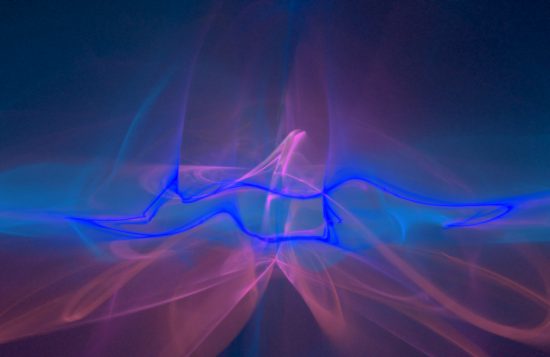
August 6, 2020
Dark energy is a kludge.
More than twenty years ago, astronomers found that observations of remote galaxies seemed to indicate the Universe is expanding faster today than it did in the past. The Big Bang theory does not contain that anomalous observation, so a force that exerts negative gravity was proposed. However, “negative gravity” is not an easily defensible concept, so “dark energy” was chosen to correspond with the then new idea called, “dark matter”. Both are “dark”, because they cannot be detected with any instrument.
In a previous Picture of the Day about the Cosmic Microwave Background radiation (CMB) data from the Very Large Array (VLA) radio telescope in New Mexico, it was noted that the discovery of “cosmic voids” in the structure of the Universe was based on an analysis of “low temperature” regions in space. As redshift measurements indicate, the voids can extend for half a billion light-years or more. It is these “supervoids” that led investigators to believe that they confirmed dark energy activity.
In 1997, two teams of astronomers were studying Type 1a supernovae, when they found that there was “something wrong” with their data. Type 1a supernovae are a sub-class of those stellar explosions, but they are thought to occur through a different process. Their particular way of exploding is still considered a mystery in astrophysical circles, but a possible mechanism is described by astrophysicists from the Swinburne Centre for Astrophysics and Supercomputing:
“What is agreed is that as the white dwarf gains mass from its companion… As the mass approaches the Chandrasekhar limit of 1.4 solar masses, the temperature and pressure in the interior of the star is such that a burning front is formed, where carbon is fused into iron and nickel almost instantaneously. It is what happens next that astronomers are still investigating.”
In 1997, Adam Riess and Saul Perlmutter were studying Type 1a supernovae, because their rise in luminosity and their subsequent decline are considered predictable. By calculating a supernova’s redshift, they can place it in space-time coordinates and find out how far away it is.
Riess and Perlmutter were shocked to find that the redshifts of the most distant Type 1a supernovae indicate that they are accelerating. Another anomalous detail is that the farther away they are, the greater their velocity. This effect was called dark energy because no cosmic influence can be seen to this day. The conclusion among consensus theorists is that dark energy makes up 75% of the forces extant in the Universe.
Dark energy is another of the phantoms that arise when redshift is applied to observations. Redshift has been the bane of astrophysics since Hubble first identified what he thought was the Doppler effect in images of faint galaxies. Instead of seeing redshift as an effect of acceleration and distance, it may be that it is an intrinsic property of matter. Astronomer Halton Arp proposed that idea many years ago, and it deserves further investigation, especially when anomalous observations are considered: high redshift objects in front of low redshift objects, for example.
“All of the ‘dark’ things in astronomy are artifacts of a crackpot cosmology. The ‘dark energy’ model of the universe demands that eventually all of the stars will disappear and there will be eternal darkness. In the words of Brian Schmidt, ‘The future for the universe appears very bleak.’ He confirms my portrayal of big bang cosmology as ‘hope less’.”
—Wal Thornhill
Stephen Smith
The Thunderbolts Picture of the Day is generously supported by the Mainwaring Archive Foundation.












